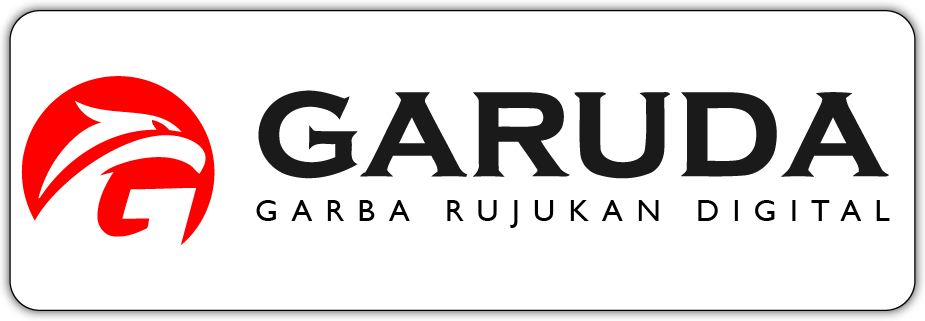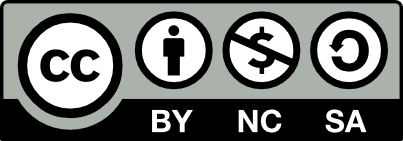PENGARUH SENAM VITALISASI OTAK UNTUK MENINGKATKAN FUNGSI KOGNITIF PADA LANSIA DI POSBINDU TAMAN ANYELIR 3 KECAMATAN CILODONG
Abstract
Latar belakang: Lansia merupakan proses terakhir dalam masa pertumbuhan dalam hidup manusia dari lahir hingga menginjak usia 60 tahun. Seiring bertambahnya usia maka akan menyebabkan banyak penurunan, salah satunya adalah fungsi kognitif. Untuk melihat apakah adanya gangguan kognitif salah satunya bisa dilihat dari pemeriksaan MOCA-INA. Salah satu upaya untuk meningkatkan fungsi kognitif pada lansia adalah dengan senam vitalisasi otak. Tujuan: Untuk mengetahui apakah ada pengaruh Senam Vitalisasi otak untuk meningkatkan fungsi kognitif pada lansia di Posbindu Taman Anyelir 3 Kecamatan Cilodong. Metode Penelitian: Jenis penelitian ini adalah quasi experimental dengan desain pretest posttest with control group, sampel dipilih dengan metode purposive sampling sebanyak 26 orang. Pengukuran fungsi kognitif menggunakan MOCA-INA dan latihan dilakukan rutin seminggu 2 kali selama 4 minggu. Uji hipotesis Analisa univariat menggunakan uji paired sample t test. Analisa data bivariat menggunakan independent sample t. Hasil: Hasil uji hipotesis pada kelompok intervensi senam vitalisasi otak didapatkan p value sebesar 0,00 yang berarti terdapat perbedaan yang signifikan. Uji perbedaan dua kelompok didapatkan hasil p value sebesar 0,701 yang berarti tidak ada perbedaan yang signifikan anatara kelompok intervensi dan kelompok kontrol. Simpulan: Terdapat pengaruh yang signifikan pada kelompok yang diberikan intervensi senam vitalisasi otak sekaligus mengikuti program senam lansia rutin maupun yang hanya diberikan perlakuan senam lansia rutin. Tidak ada perbedaan yang signifikan pada kelompok intervensi senam vitalisasi otak dan kelompok kontrol senam lansia rutin.
References
Badan Pusat Statistik (BPS). Statistik Penduduk Lanjut Usia 2018. Jakarta: Badan Pusat Statistik; 2020.
Dash, Villemarette-Pittman. (2015). Alzheimer's Disease. https://www.amazon.com/Alzheimers-Disease-Villemarette-PitmanVillemarette-PittmanPaperback/dp/B014N7KRZI.
Fatmawati. 2017. Pengaruh Senam Vitalisasi Otak Terhadap Skor Montreal Cognitive Assessment Versi Indonesia (Moca-Ina) Pada Lansia Di Posbindu Dahlia Senja Limo.
Handayani, S. P., Sari, R. P., & Wibisono, W. (2020). Literature Review Manfaat Senam Lansia Terhadap Kualitas Hidup Lansia. BIMIKI (Berkala Ilmiah Mahasiswa Indonesia), 8(2), 48–55. https://doi.org/10.53345/bimiki.v8i2.143
Idawati el all. (2020). Gambaran Fungsi Kognitif Pada Lanjut Usia Didesa Buku Kecamatan Mapilli Kabupaten Polewali Mandar. Jurnal Ilmiah Kesehatan Diagnosis Volume 15 Nomor 3 Tahun 2020. eISSN : 2302-2531
Korsnes, M. S. (2020). Performance on the mini-mental state exam and the Montreal cognitive assessment in a sample of old agepsychiatric patients.
Pardosi, S., & Max, M. (2019). The Influence of Brain Vitalization Exercise in Increasing Cognitive Functions For Elderly in Lingkar Barat Public Health Center Bengkulu 2018. Research on Humanities and Social Sciences, 9(10), 33–37. https://doi.org/10.7176/rhss/9-10-05
Puspasari S, Martiani H,. 2018. Gambaran Tingkat Pengetahuan Lansia Tentang Senam Otak Di Wilayah RW 06 Kelurahan Pamoyan Kota Bandung. Jurnal Komprehensif
Putu, N., Purnama, D., Yulianti, A., & Diagusti, D. (2023). Peran fisioterapi untuk mencegah gangguan kognitif pada lansia di Posyandu Ngijo Karangploso Jawa Timur. Ruang Cendekia : Jurnal Pengabdian Kepada Masyarakat, 2(1), 60–66.https://jurnal.arkainstitute.co.id/index.php/ruang-cendekia/article/view/571
Riset Kesehatan Dasar (Riskesdas) (2018). Badan Penelitian dan Pengembangan Kesehatan Kementerian RI tahun 2018. http://www.depkes.go.id/resources/download/infoterkini/materi_rakorpop_20 18/Hasil%20Riskesdas%202018.pdf – Diakses Agustus 2018.
Tri Nugroho, & Fuji Pratiwi. (2021). Analisis Perbedaan Fungsi Kognitif Pada Lansia Antara Sebelum Dan Sesudah Dilakukan Senam Vitalisasi Otak. Healthy Journal, 9(1), 35–42. https://doi.org/10.55222/healthyjournal.v9i1.513
World Health Organization (WHO). (2022). Global Dementia Observatory (GDO). Accessed December 5, 2023. https://www.who.int/data/gho/data/themes/global-dementiaobservatory-gdo
Wreksoatmojo B. R. 2016. Pengaruh Aktivitas Fisik terhadap Fungsi Kognitif Lanjut Usia di Jakarta. CDK-236/ vol. 43 no. 1.
Wulandari, E., Nasution, R. A., & Sari, Y. I. P. (2023). Hubungan Kualitas Tidur dengan Fungsi Kognitif Lansia di Puskesmas Muara Kumpe. Jurnal Ilmiah Ners Indonesia, 4(1), 134–144. https://doi.org/10.22437/jini.v4i1.25253
Zulsita.(2015). Pengaruh Senam Otak terhadap Peningkatan Daya Ingat Lansia di Panti Werdha Karya Kasih Mongonsidi. Skripsi. Medan, Fakultas Keperawatan Universitas Sumatera Utara. Skripsi.
Copyright (c) 2025 IFI CABANG KOTA BEKASI

This work is licensed under a Creative Commons Attribution-NonCommercial-ShareAlike 4.0 International License.
Submission Preparation Checklist
As part of the submission process, authors are required to check off their submission's compliance with all of the following items, and submissions may be returned to authors that do not adhere to these guidelines.
- I hereby declare that this submission is my own work.
- I hereby stated that this manusrcipt have no plagiarism matter.
- I declare the submission has no potential conflict of interest.
- I hereby stated that this manusrcipt have never been previously published in any other scientific publication and not being under reviewing process of any other scientific publication.
- The submitted manuscript contains no least than 2.000 words and not exceed 25 pages A4 including figures and tables, without any appendixes.
- The submitted manuscript has been written using Open Office Text Document (.odt) or Microsoft Word (.doc/.docx).
- Title already brief and concise, written in English, and less than 15 words.
- Abstract already brief and concise and not exceed 150 words in English.
- Keywords are written in English, between three to five phrase.
- The manuscript structure already consist: Introduction, Method/Material, Result and Discussion, Conclusion, Acknowledgement, and References.
- References are written according the writing style of MEV. The primary references are no less than 80% from at least fifteen sources and had been taken from the late ten year publications.
- The instructions in Ensuring a Blind Review have been followed to the submitted manuscript.
- (At least) two scientific referees have been suggested in "Comments for the Editor" textbox in the bottom of this page.
Copyright Notice
Retained Rights/Terms and Conditions of Publication
1. As an author you (or your employer or institution) may do the following:
- make copies (print or electronic) of the article for your own personal use, including for your own classroom teaching use;
- make copies and distribute such copies (including through e-mail) of the article to research colleagues, for the personal use by such colleagues (but not commercially or systematically, e.g. via an e-mail list or list server);
- present the article at a meeting or conference and to distribute copies of the article to the delegates attending such meeting;
- for your employer, if the article is a ‘work for hire’, made within the scope of your employment, your employer may use all or part of the information in the article for other intra-company use (e.g. training);
- retain patent and trademark rights and rights to any process, procedure, or article of manufacture described in the article;
- include the article in full or in part in a thesis or dissertation (provided that this is not to be published commercially);
- use the article or any part thereof in a printed compilation of your works, such as collected writings or lecture notes (subsequent to publication of the article in the journal); and prepare other derivative works, to extend the article into book-length form, or to otherwise re-use portions or excerpts in other works, with full acknowledgement of its original publication in the journal;
- may reproduce or authorize others to reproduce the article, material extracted from the article, or derivative works for the author’s personal use or for company use, provided that the source and the copyright notice are indicated, the copies are not used in any way that implies RCEPM-LIPI endorsement of a product or service of any employer, and the copies themselves are not offered for sale.
All copies, print or electronic, or other use of the paper or article must include the appropriate bibliographic citation for the article’s publication in the journal.
2. Requests from third parties
Although authors are permitted to re-use all or portions of the article in other works, this does not include granting third-party requests for reprinting, republishing, or other types of re-use. Requests for all uses not included above, including the authorization of third parties to reproduce or otherwise use all or part of the article (including figures and tables), should be referred to RCEPM-LIPI by going to our website athttp://telimek.lipi.go.id.
3. Author Online Use
- Personal Servers. Authors and/or their employers shall have the right to post the accepted version of articles pre-print version of the article, or revised personal version of the final text of the article (to reflect changes made in the peer review and editing process) on their own personal servers or the servers of their institutions or employers without permission from RCEPM-LIPI, provided that the posted version includes a prominently displayed RCEPM-LIPI copyright notice and, when published, a full citation to the original publication, including a link to the article abstract in the journal homepage. Authors shall not post the final, published versions of their papers;
- Classroom or Internal Training Use. An author is expressly permitted to post any portion of the accepted version of his/her own articles on the author’s personal web site or the servers of the author’s institution or company in connection with the author’s teaching, training, or work responsibilities, provided that the appropriate copyright, credit, and reuse notices appear prominently with the posted material. Examples of permitted uses are lecture materials, course packs, e-reserves, conference presentations, or in-house training courses;
- Electronic Preprints. Before submitting an article to an MEV Journal, authors frequently post their manuscripts to their own web site, their employer’s site, or to another server that invites constructive comment from colleagues. Upon submission of an article to MEV Journal, an author is required to transfer copyright in the article to RCEPM-LIPI, and the author must update any previously posted version of the article with a prominently displayed RCEPM-LIPI copyright notice. Upon publication of an article by the RCEPM-LIPI, the author must replace any previously posted electronic versions of the article with either (1) the full citation to the work with a Digital Object Identifier (DOI) or link to the article abstract in MEV journal homepage, or (2) the accepted version only (not the final, published version), including the RCEPM-LIPI copyright notice and full citation, with a link to the final, published article in journal homepage.
4. Articles in Press (AiP) service
RCEPM-LIPI may choose to publish an abstract or portions of the paper before we publish it in the journal. Please contact our Production department immediately if you do not want us to make any such prior publication for any reason, including disclosure of a patentable invention.
5. Author/Employer Rights
If you are employed and prepared the article on a subject within the scope of your employment, the copyright in the article belongs to your employer as a work-for-hire. In that case, RCEPM-LIPI assumes that when you sign this Form, you are authorized to do so by your employer and that your employer has consented to the transfer of copyright, to the representation and warranty of publication rights, and to all other terms and conditions of this Form. If such authorization and consent has not been given to you, an authorized representative of your employer should sign this Form as the Author.
6. RCEPM-LIPI Copyright Ownership
It is the formal policy of RCEPM-LIPI to own the copyrights to all copyrightable material in its technical publications and to the individual contributions contained therein, in order to protect the interests of the RCEPM-LIPI, its authors and their employers, and, at the same time, to facilitate the appropriate re-use of this material by others. RCEPM-LIPI distributes its technical publications throughout the world and does so by various means such as hard copy, microfiche, microfilm, and electronic media. It also abstracts and may translate its publications, and articles contained therein, for inclusion in various compendiums, collective works, databases and similar publications
Every accepted manuscript should be accompanied by "Copyright Transfer Agreement" prior to the article publication.





